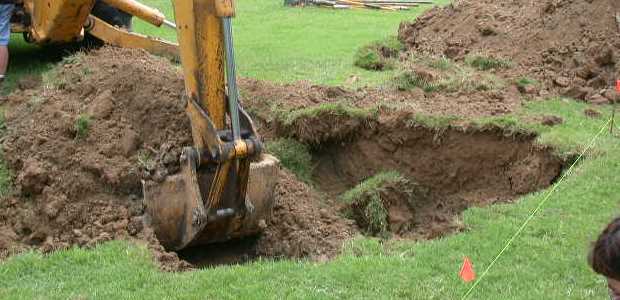
Saskatchewan Utilities Unite to Reduce Underground Damage Incidents
SaskEnergy, SaskPower, and SaskTel had a combined 1,037 incidents last year where excavators contacted buried power, natural gas, or telecommunications lines. They want to ensure safe digging practices are followed this year.
The three main utilities for Saskatchewan, Canada -- SaskEnergy, SaskPower, and SaskTel – announced a joint plan last week that increases their efforts to reduce the number of
incidents where their buried power, natural gas, and telecommunications lines are damaged. It's a significant and growing problem: SaskEnergy had 255 incidents in 2013, while SaskPower had 197 incidents and SaskTel had 585 incidents.
In addition to damage prevention programs already in place, they will:
- offer an enhanced Sask 1st Call public awareness campaign and a Sask 1st Call Mobile App.
- introduce a pilot project involving "safety patrols" to monitor construction activities in new subdivisions in Regina and Saskatoon where more damage is occurring to buried lines.
- renew the contract for Magna Electric Corporation to perform joint line locating for all
three utilities; their news release stated it is a North American industry leading safety practice to have one qualified technician locate multiple buried lines rather than several companies performing this service separately.
SaskEnergy, a natural gas distribution company, indicated its incident reports show pipelines are increasingly being punctured in new urban neighborhoods during landscaping, deck and fence installations, and driveway installations.
"When safe digging is a responsibility shared by the Crown utilities, line locaters, contractors, and homeowners, then an increase in construction activity will not result in an increase in damage to underground lines," said Doug Kelln, SaskEnergy's president and CEO. "By working together during what will be another busy construction year, we improve public safety and reduce costly delays whether for major projects, or backyard home improvements."
"Aside from service disruptions and the financial consequences of hitting an underground line, safety is a huge concern," agreed Robert Watson, president and CEO at SaskPower, an electric utility. "Each time someone hits a power line, it has the potential to result in serious injury or loss of life. Ideally, we want to see zero incidents. The more we can do to prevent any incidents when it comes to working near underground lines, the better."
Ron Styles, president and CEO of communications provider SaskTel, focused on the service disruptions that result from damaged underground lines. "We are very committed to working to lower these line cut figures because, in addition to the safety concerns associated with any disruption to underground infrastructure, the reliance on communications network services for both individuals and businesses today means outages can have far-reaching consequences beyond mere inconvenience."